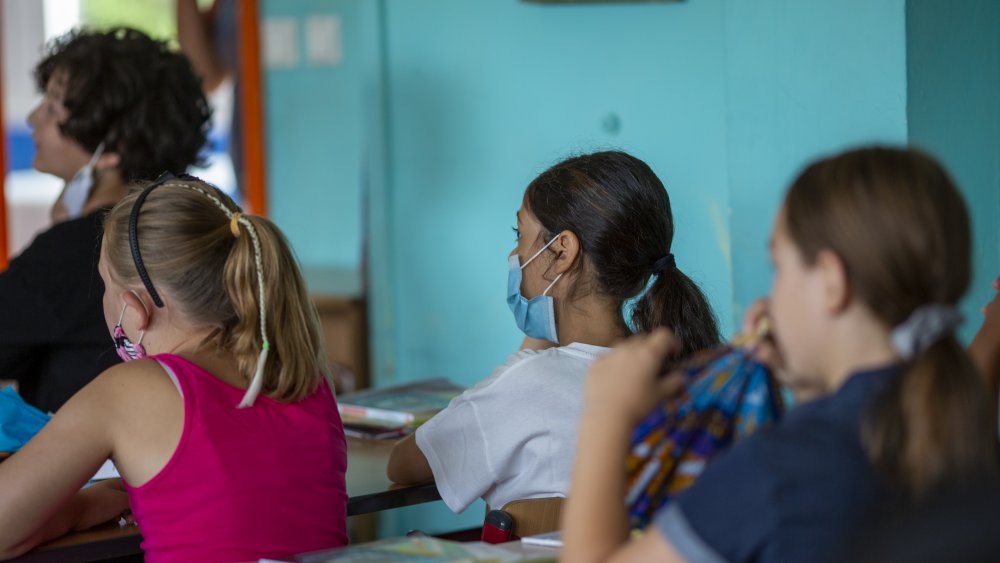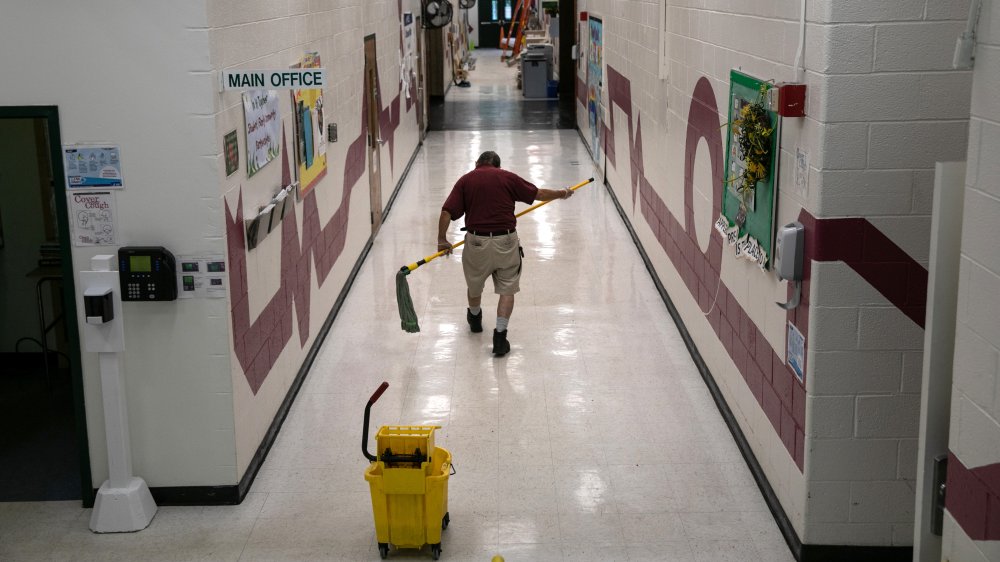CDC Changes One Recommendation For Schools And COVID-19
It's getting pretty stressful trying to keep up with all of the ever-changing guidelines and recommendations coming from the Centers for Disease Control and Prevention as we try to stay one step ahead of the COVID-19 virus. First it was masks — don't wear them, do wear them, wear them all the time. Then came the ever-updating CDC guidelines on reopening businesses while still socially distancing, and now some new — and very confusing — guidelines on when and if we should get tested for the virus.
Most recently, with summer coming to an end, the CDC is weighing in on the raging debate about when, where, and how it will be safe to send kids back to school. While many parents and teachers are still very concerned about disease transmission in a school setting (not without reason, since schools are notorious super-spreaders of every cold, flu, and stomach bug that seems to be going around), the CDC nonetheless comes down on the side of getting every kid out of the house and back behind a desk ASAP. As their guidelines state, "Everyone's goal is to prioritize the reopening of schools as safely and as quickly as possible given the many known and established benefits of in-person learning."
Their most recent update to these guidelines, however, will likely raise more than a few eyebrows — they're no longer recommending that entire schools be closed down when someone on campus has been diagnosed with COVID-19.
What the CDC says schools should do in case of infection
The new CDC guidelines say that while a school "might need to implement short-term building closure procedures if/when an infected person has been on campus," another option would be "an initial short-term class suspension and cancellation of events and activities" or else just closure of "classrooms [or] common areas... where others were exposed to the infected person." In some cases, they say, all that might need to be done is a "thorough... cleaning [of] the areas where the infected person spent significant time."
While the CDC says COVID-19 doesn't seem to pose much of a risk to school-aged children, they might be forgetting one significant fact: Teachers. Are. Adults. Many of them are older adults, in fact. The National Center for Educational Statistics gives the average age of a teacher in the U.S. as 42.4 years, but also reports that almost 19 percent of teachers are aged 55 and older. According to CNN Health, many teachers are protesting being forced back into the classroom (evidently being declared "critical infrastructure workers" by the White House isn't much compensation for having to risk your life for low pay, go figure), and some have even resigned in order to avoid being exposed to potentially deadly germs on a daily basis.
Whatever the recommendations may be, ultimately, it will be up to individual teachers and parents to do what they feel is best.


